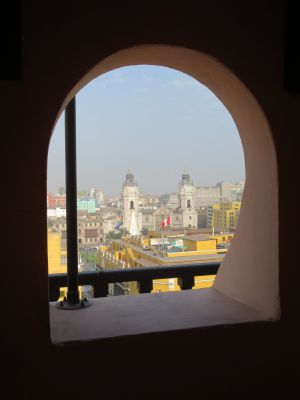Downtown

Lima, Peru’s bustling capital, was founded in 1535 by Spanish conquistador Francisco Pizarro. He intended to establish a capital accessible to Spanish ships, a place to export the gold and silver he found here as well as bring more Europeans to the region. Pizarro built a city centered around the Plaza de Armas (the central plaza where his troops would parade and show off their military technology). On one side of the plaza is the large cathedral where Pizarro himself was laid to rest after a successful assassination attempt by a group of rival Spanish soldiers. On another is the Presidential Palace, which replaced Pizarro’s home after Peru declared independence in 1821. The other two sides of the plaza contain the city hall and a commercial center. The layout reflects Peru’s four centers of power: the church, national government, local government and business interests. Near the plaza are a variety of other churches, monasteries and buildings of historical interest. We spent a day exploring down town Lima with our study coordinator, Celia, a Lima native who enjoys showing us around her city.





































































